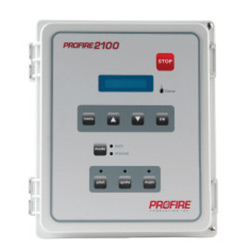Dec . 16, 2024 13:06 Back to list
custom rebuild a hydraulic cylinder
Custom Rebuild of a Hydraulic Cylinder A Comprehensive Guide
Hydraulic cylinders are the backbone of countless industrial applications, providing the force necessary to lift, push, or move heavy loads. Over time, however, wear and tear can lead to diminished performance. At this point, a custom rebuild of a hydraulic cylinder becomes essential. This article will explore the process, benefits, and considerations involved in a custom rebuild of a hydraulic cylinder.
Understanding Hydraulic Cylinders
Before diving into the rebuild process, it's important to understand what a hydraulic cylinder is and how it operates. Essentially, a hydraulic cylinder is a mechanical actuator that converts hydraulic energy into linear motion. It consists of a cylindrical barrel, a piston, and seals that prevent fluid leaks. When pressurized hydraulic fluid enters the cylinder, it pushes the piston, creating movement. Given their crucial role in machinery, maintaining optimal performance is vital.
Why Rebuild?
There are several reasons why you might consider a custom rebuild of a hydraulic cylinder
1. Wear and Tear Over time, components can wear out, causing leaks and reduced efficiency. 2. Damage External factors such as impacts or corrosive environments can damage cylinders. 3. Performance Upgrades A rebuild can provide the opportunity to upgrade components for improved performance.
The Rebuild Process
The custom rebuild process generally involves several key steps
1. Assessment and Diagnosis The first step is to evaluate the current condition of the hydraulic cylinder. This may involve visual inspections, pressure tests, and detailed measurements to determine the extent of wear or damage.
2. Disassembly Once the assessment is complete, the next step is to carefully disassemble the cylinder. Special care must be taken to retain all components and fasteners, as they will either be reused or replaced.
3. Cleaning After disassembly, all components need to be thoroughly cleaned. This is crucial, as any debris or contaminants can affect the performance of the rebuilt cylinder. Ultrasonic cleaning is often used to ensure all parts are free of contaminants.
4. Replacement of Components After cleaning, worn or damaged parts, such as seals, O-rings, and piston rods, must be replaced. Custom parts may be manufactured to fit specific needs, ensuring that the rebuilt cylinder will meet or exceed original specifications.
custom rebuild a hydraulic cylinder

5. Reassembly With all components replaced or repaired, the cylinder is reassembled. Careful attention to detail is important during this stage to ensure correct alignment and sealing.
6. Testing Finally, the rebuilt hydraulic cylinder undergoes rigorous testing to ensure it functions correctly. This may involve pressure testing and functional tests to simulate real-world conditions.
Benefits of Custom Rebuilding
1. Cost-Effective Rebuilding a hydraulic cylinder is often more economical than purchasing a new unit, especially for high-cost industrial applications.
2. Quality Control A custom rebuild allows for a thorough inspection and replacement of components, often resulting in a higher quality product than a new mass-produced cylinder.
3. Customization Custom rebuilding allows for adjustments and upgrades that can improve performance. For instance, choosing different seal materials can enhance resistance to specific types of fluids or temperatures.
4. Sustainability Rebuilding extends the life of existing equipment, contributing to more sustainable practices by reducing waste and the demand for new resources.
Considerations
When contemplating a custom rebuild, consider the following
- Expertise Ensure that the rebuild is conducted by experienced professionals who understand the complexities of hydraulic systems. - Documentation Keep accurate records of all assessments, repairs, and modifications made during the rebuild process. - Maintenance Regular maintenance will extend the life of the rebuilt cylinder and reduce the likelihood of future issues.
Conclusion
A custom rebuild of a hydraulic cylinder not only revitalizes essential machinery but also presents a cost-effective and sustainable solution to maintenance challenges. Through careful assessment, precise craftsmanship, and thorough testing, a rebuilt hydraulic cylinder can perform optimally, ensuring your operations run smoothly for years to come. Embracing the idea of rebuilding allows industries to better manage their resources while maintaining high performance standards.
-
Fork Lift Power Units - Hebei Shenghan | Efficiency, Reliability
NewsJul.13,2025
-
1.5-Ton Turbocharged Cylinder-Hebei Shenghan|Hydraulic Solution,Energy Efficiency
NewsJul.13,2025
-
Auto Hoist Power Units-Hebei Shenghan|Efficiency&Industrial Lifting
NewsJul.13,2025
-
Double Acting Power Units-Hebei Shenghan|Hydraulic Solutions,Industrial Efficiency
NewsJul.13,2025
-
1.5 Ton Lifting Cylinder 70/82-40-290-535 - High-Performance Hydraulic Solution | Hebei Shenghan
NewsJul.13,2025
-
Fork Lift Power Units - Hebei Shenghan | Efficiency&Reliability
NewsJul.13,2025
